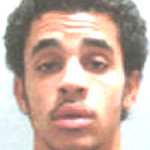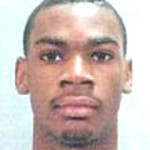After two youths escaped the Solano County Juvenile Detention Facility Complex, at 740 Beck Ave., Fairfield last year, the Solano County grand jury decided to examine the buildings and operations.
A report on the grand jury’s findings has been released, and while it decided the Juvenile Hall staff operates the site efficiently, a long-awaited security system still isn’t in place.
The grand jury has the authority to inspect prisons and other confinement operations, such as the Juvenile Hall, which is operated by the county’s probation department.
After previous tours, two grand jury reports determined the Juvenile Hall lacked an effective surveillance system, and this latest tour was no different, the latest report said, citing a system that “does not have recording capability.”
Juvenile Hall staff told grand jury members that a contract to upgrade the system had been recommended prior to Jan. 31, when the panel made its visit. However, installation of the system was delayed after prevailing wages were disputed, the report said.
The grand jury also expressed concern about last year’s escapes.
Melvin Mason, 18, Vallejo, and Kashius Brazeal, 15, Benicia, escaped the confinement area March 14, 2013.
“The grand jury was informed that the apparatus that contributed to the escape has been removed,” the report said. “The failure to follow the established procedure involving the lack of supervision resulting in the previous escape has been corrected.”
Mason had been charged with attempted burglary and vandalism, and Brazeal had been accused of burglary and attempted burglary.
Mason turned himself in two days after the escape, but Brazeal eluded capture until June 19.
California Highway Patrol said Brazeal was driving a stolen van and heading toward Vacaville with two 16-year-old boys.
According to the CHP reports, Brazeal was driving between 85 and 100 mph on highways and surface streets near Vacaville. He ran a red light on Vaca Valley Parkway, crashing into two vehicles that had entered the intersection, then collided with a pole.
Those in the other cars were unhurt, but the three youths were taken to local hospitals for treatment of their injuries.
Brazeal later was taken into custody and accused of evading police, possessing a stolen vehicle and resisting arrest, and probation violation. The two teens with him were accused of possessing a stolen vehicle and resisting arrest.
The grand jury’s tour was comprehensive and examined other areas in addition to security.
During the visit, the grand jury focused on booking information, health screening, custody assessment classification, property records, orientation, visitation rules, hygiene and clothing concerns.
Members visited the center’s intake, medical and food preparation area, and interviewed juvenile detention staff, teachers and other education personnel, several of the juveniles themselves, supervisors, counselors, the center’s food preparation and medical staff as well as Probation Department employees.
The primary confinement area, the locked area for juveniles who have been arrested and are awaiting court proceedings, has 68 of the total 126 beds.
The New Foundations has 30 beds for juveniles who have been sentenced by the court who stay there up to 120 days during attempts at family reunification and drug and alcohol abuse intervention. The Challenge Unit, similar to New Foundations, has 28 beds, but hasn’t been used for some time.
“Programs in all units consist of education, anger avoidance, self-esteem building, self-discipline and personal accountability,” the report noted.
The day of the inspection, the confinement area had 68 in its population, and the New Foundations had 18. The average youth spends 17 days at the Juvenile Hall.
The report said the complex has 63 allocated group counselors who have rotating shifts, four senior group counselors and four supervising group counselors.
Those confined at the Juvenile Hall have educational opportunities, the report noted: “State-approved Common Core Standards have been implemented throughout the facility.
“The Solano County Office of Education certifies all programs and educators as mandated by the state.”
Students study four core subjects, English, mathematics, social studies and science, and may earn either a high school diploma or a General Education Development (GED) equivalency certificate.
“A typical classroom has 15 students, one teacher and one para-educator,” the report said.
In the medical area, the grand jury learned that 30 percent of the admitted minors already are on prescribed behavior-altering medication.
“These medications must be administered in the proper amount and must be monitored continuously by the medical staff,” the report said. To do that, the Juvenile Hall has registered nurses, medical assistants, physicians who visit twice a week as well as those on call, their assistants, a psychiatrist, a mental health clinician and a licensed vocational nurse.
The youths are able to participate in programs offered by Alcoholics Anonymous, Narcotics Anonymous, Planned Parenthood, AIDS Awareness, organizations that offer religious services, youth mentors, Solano Community College interns, motivational speakers, Girl Scouts of America and more.
Juvenile Hall’s staff offer programs called Thinking for a Change, Anger Avoidance, Family Reconciliation, Forward Thinking and others.
Once finished examining the Juvenile Hall, the grand jury studied California codes related to standards, past grand jury reports, a variety of Juvenile Hall forms, a checklist for minor orientation, a reference list of non-bookable offenses, Juvenile Hall visiting hours, the Solano Juvenile Institutions website, Juvenile Hall’s own publications and the contract for the upgraded surveillance system.
The grand jury also recommended that Juvenile Hall staff continue operation and maintenance procedures “at the professional level observed during the grand jury inspection.”
To read the full report, visit the website www.solano.courts.ca.gov and click the link to “Grand Jury Information.”








Leave a Reply